26 October 1778 Monday
"Well?"
"Well nothing. I just asked him what he was doing."
"And?"
"He said he was solving a mystery."
"What mystery?"
"He said it was a real who-didn't-do-it."
Laura had to laugh, but still...
26 October 1790
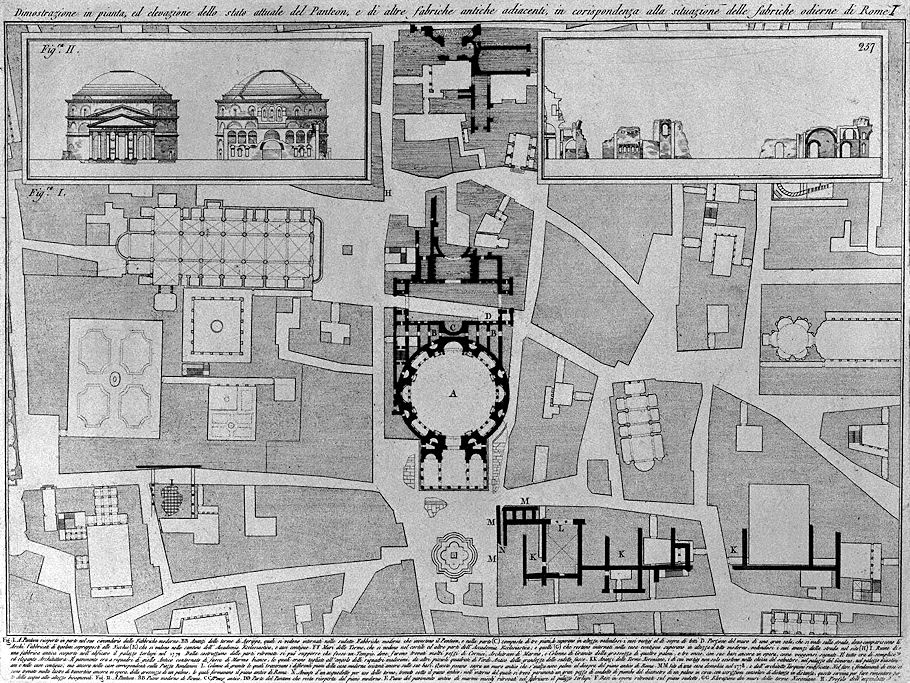
26 October 1812 Monday
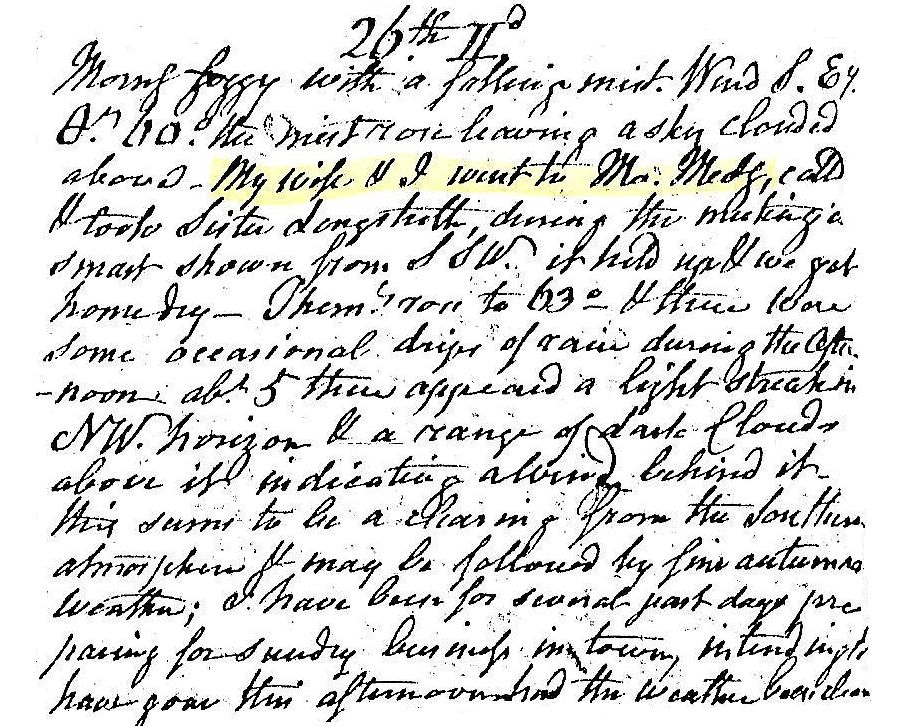
Morning foggy with a falling mist. ... My wife and I went to Monthly Meeting and took Sister Longstreth, during the meeting a smart shown from SSW, it held up and we got home dry. ... I have been preparing for several past days preparing for sundry businesses in town, intending to have gone this afternoon had the weather been clear.
26 October 2000
Baroque beginnings?
A. asks:
To repeat a previous question: who designed the Baroque? OR How did the Baroque arise (emerge)? Any takers?
S. offers:
I think Michelangelo's architecture (which was more or less a product of his late life) manifested tremendous 'new' inspiration for 16th -17th century architecture. The details of the Porta Pia and the wholly integrated articulation of the Sforza Chapel offer architectures completely unprecedented until that time, which in turn inspired new architectures. Likewise, the 'undulating' wall of St. Peter's no doubt became the new paradigm, especially considering that St. Peter's then (as now?) represented the ultimate place of worship. In simple terms, it is best to learn from the best.
To this day, I am intrigued by Michelangelo's fortification designs for Florence (some executed and otherwise recorded as plan drawings). They exhibit many proto-Baroque flourishes, and it is interesting to note the military connection.
"This places Michelangelo's fortification projects among the incunabula of modern military architecture, just at the most fluid and inventive moment in its history, at a time when experience had established no proven formula of design. Unlike the situation in other arts, the lessons of antiquity and of preceding generations were of little account; this is one of those rare events in the history of architecture when technological advances altered the basic precepts of design."
James Ackerman, The Architecture of Michelangelo (Penguin, 1970), p. 127.
ps
I see architecture as the product of human imagination(s), and that is why I spend my time trying to figure out where human imagination comes from.
26 October 2002
Re: Monkeys and designers
You raise an interesting point. I've never heard of the 100th monkey notion, but I have from time to time wondered about the fact "that designers, that have never seen the work of another, and living across geographic bounds, can create similar art." In the mid-1980s I thought (to myself) that wavelengths, somehow literally and/or figuratively, had to do with an otherwise serendipitous creative/cognitive commonality. The wavelengths (if I try to expand this 'theory') emanate from individuals and these same wavelengths are picked up by other individuals, and in either case heightened sensitivity is involved. Like the 100th monkey notion, as more individuals incorporate a wavelength that is out there, the stronger the wavelength 'signal' becomes. Admittedly, this idea is easily flawed, and I only mention it now as something I used to think (about).
While your question (rightly) centers on creative similarities between disparate artists/designers, a related phenomenon in our time is the effective role of the hired publicist. Recently, I mentioned that Frank Gehry's cardboard furniture was featured in a 1972 issue of Life magazine. I have my own collection of 1972 Life magazines that I received by subscription back then and which I've been taking apart over the years, but I also recently purchased a lot of them via eBay, thus my renewed knowledge of what is in these magazines. I wanted to show the Gehry feature but I didn't bookmark it. So, instead of looking through all the magazines again, I looked up the article in a Gehry bibliography, and I was surprised to find that there were over a dozen 1972 publications that featured an article on Gehry's cardboard furniture. In this case, the 100th monkey is more specifically the 100th magazine editor contacted by a publicist.
Re: Monkeys and designers
You know, there might just be a 'natural' creative pattern oscillating between wavelengths, calendrical coincidence, and reenactment.
research assistance
Hi Sue, as promised the following is some data retrieved from my collected xeroxes of material pertaining to the Campo Marzio, which may be useful to your present work regarding Piranesi and the Pantheon.
1. Samuel Ball Platner in The Topography and Monuments of Ancient Rome (1904) gives a concise description of the:
Basilica Matidiae, basilica Marcianae. These two basilicas were between the Pantheon, the north end of the Saepta, and the column of Aurelius. One of them was named from Matidia, the mother-in-law of Hadrian, and the other from Marciania, the sister of Trajan. They probably formed one group with the temple of Hadrian. Some cipollino columns that have been found just north of the via dei Pastini, between the Pantheon and the vicolo della Spada d' Orlando, undoubtedly belong to one of them.
2. The book on Hadrian I mentioned is:
Anthony R. Birley, Hadrian: The Restless Emperor (NY: Routledge, 1997). Chapter Two, "The Campus Martius" is all about Hadrian's architecture/building activity within the Campo. One illustration is of a reconstruction of the "South Building" once attached(?) to the south of the Pantheon. The plan of this building matches the 'Xystus' Piranesi delineates within the Ichnographia. The "South Building" is often referred to as the Basilica Neptuni, and, for the record, Piranesi positioned the Basilica Neptuni somewhere else within the Ichnographia, that is, just east of the large sundial.
3. According to Freund's Latin Dictionary:
xystus
- among the Greeks, a covered portico or gallery, where athletes exercised in winter
- among the Romans, an open colonnade or portico, or a walk planted with trees, etc., for recreation, conversation, philosophical discussion, etc.
4. I made a cursory overview of Aitken's thesis and I found no direct mention/analysis of the Pantheon complex within the Ichnographia, nor did there seem to be any mention within Aitken's treatment of the Campo Marzio text that Piranesi intended to publish a separate volume on the Pantheon.
26 October 2006
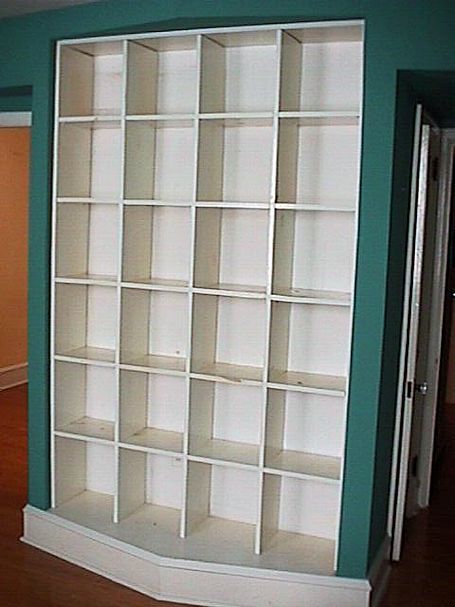 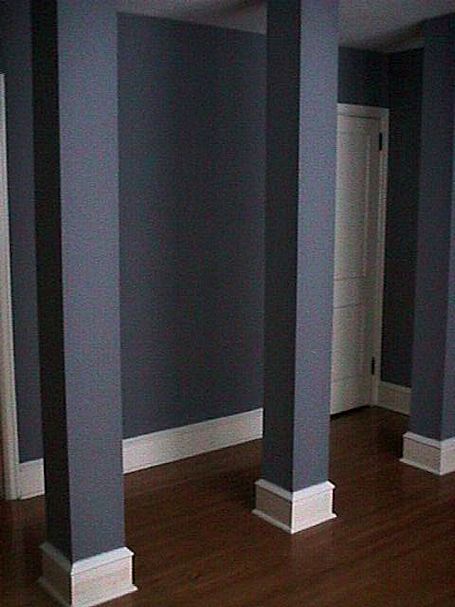
The old house left behind.
26 October 2016
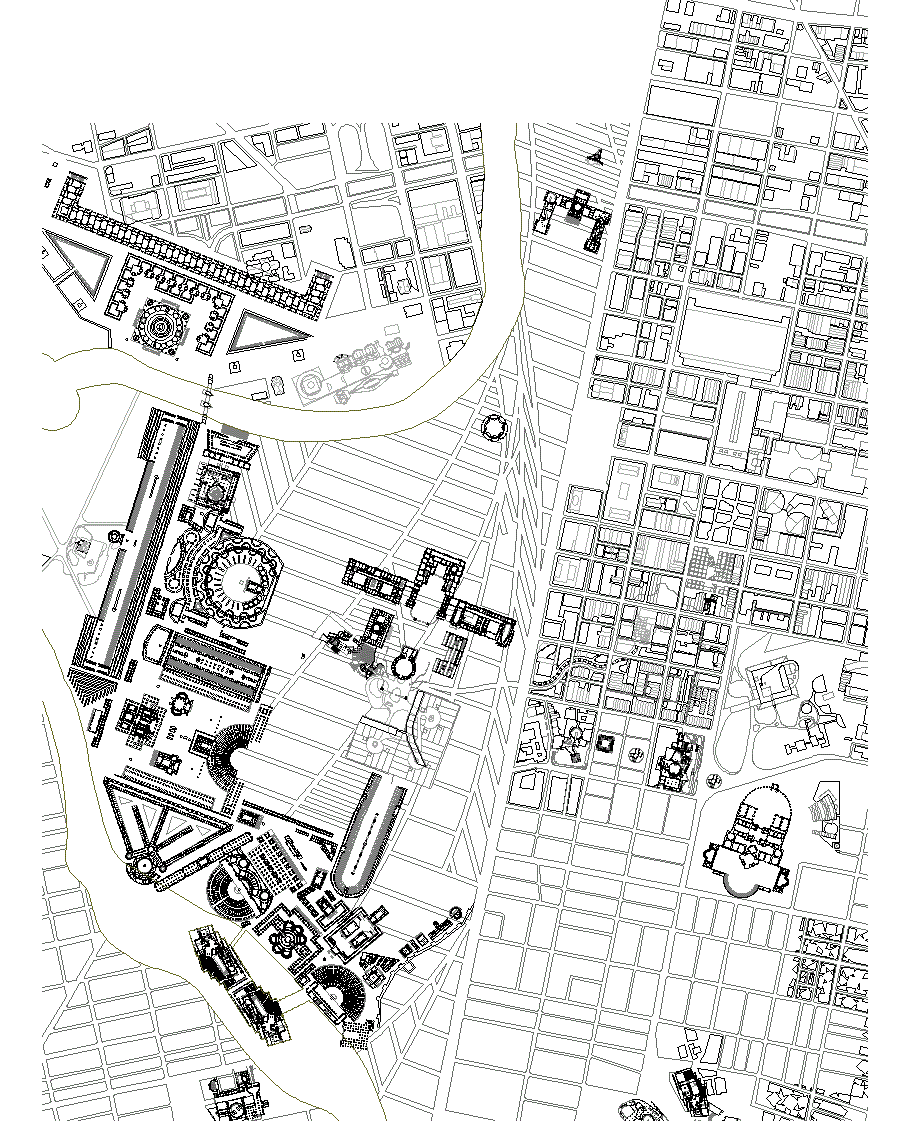
Pantheon Paradigm base map so far IQ15/19
26 October 2019
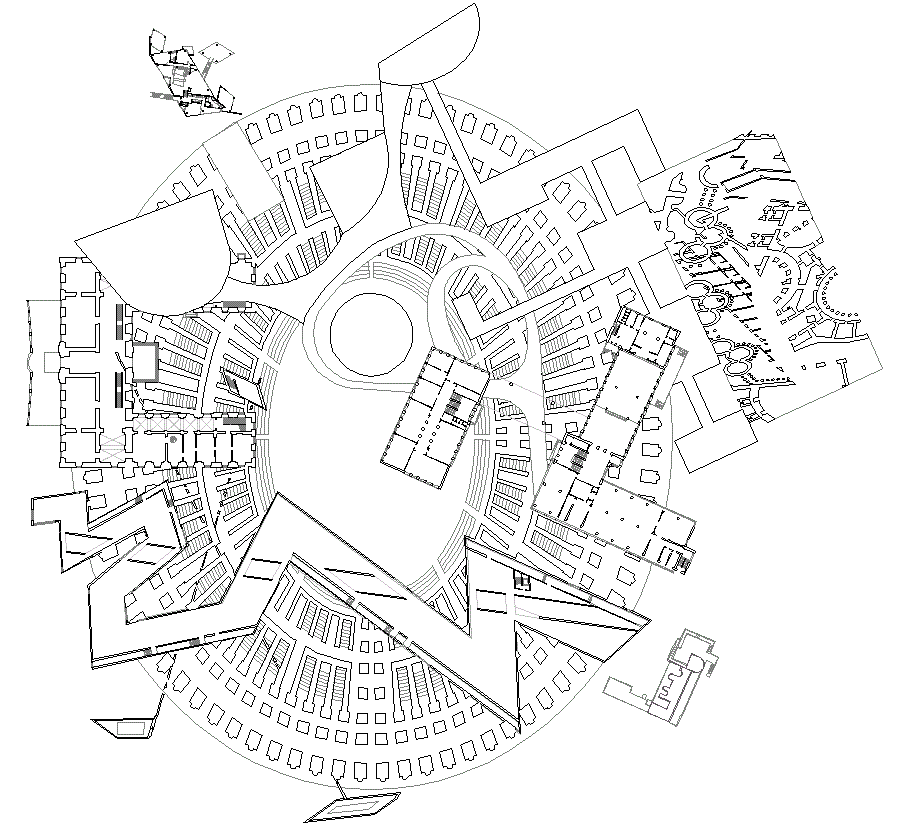
Contamination 003 plan
26 October 2022 Wednesday
text messages from HW:
What you said sounds like what I "hear" when my brain isn't working well ...lol
Maybe some time you'll explain.
text messages to HW:
quondam.com/80/8003b.htm
through to
quondam.com/80/8003w.htm
These two pages and what's in between will explain.
|